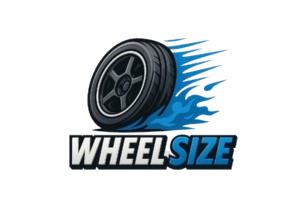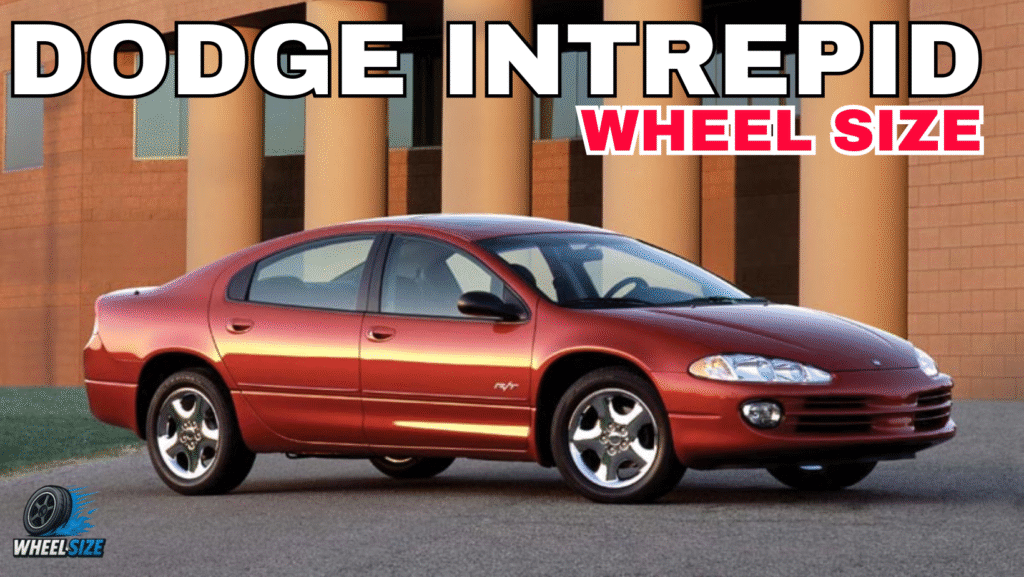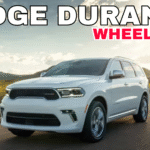The Dodge Intrepid was a bold move by Chrysler in the early ’90s, embracing a futuristic “cab-forward” design and introducing a new era of full-size American sedans. Built for comfort, space, and decent road presence, the Intrepid has remained a favorite among Mopar fans who love its unique styling and generous cabin room. But whether you’re maintaining a classic first-gen or upgrading a second-gen with a sportier stance, getting the wheel fitment right is absolutely critical.
This guide breaks down everything you need to know about bolt patterns, rim sizes, offsets, hub bores, and tire sizing for both generations of the Intrepid. If you’re thinking about swapping out your OEM setup or exploring aftermarket options, this is the place to start. Let’s get into the specs and options that help these sedans ride and handle at their best.
First Generation Dodge Intrepid (1993–1997)
Wheel Bolt Pattern
The first-generation Dodge Intrepid came with a 5×114.3 mm (also known as 5×4.5″) bolt pattern. This was a common pattern across several Chrysler and Dodge vehicles from that era, making wheel replacement more accessible. When upgrading or swapping wheels, it’s crucial to stick to this pattern to ensure the wheel sits flush and safe on the hub. If you’re sourcing used wheels, always confirm the bolt pattern before purchasing, as a mismatch can lead to vibration, poor handling, or even unsafe driving conditions.
Factory Rim Size
From the factory, most 1993–1997 Intrepids came with either 15-inch or 16-inch rims, depending on the trim level. The base trims were usually equipped with 15×6-inch steel wheels, while the ES trims got upgraded to 16×7-inch alloys. These rim sizes kept the car riding comfortably while still looking refined for the era. If you’re looking to upgrade, you can safely go up to 17 inches without running into clearance issues, but always double-check tire sizing to maintain the correct rolling diameter.
Recommended Wheel Offset
The stock offset for the first-gen Intrepid wheels is typically +40 mm. Staying within a range of +35 mm to +45 mm keeps the wheels centered in the wheel well, maintaining the original suspension geometry and preventing fender rub. Going with an offset that’s too low can push the wheel out too far, possibly causing issues with fender clearance. On the flip side, too high of an offset can tuck the wheel in and affect turning radius and brake clearance.
Hub Bore Size
The first-gen Intrepid uses a 71.5 mm hub bore. This is the center hole of the wheel that fits over the hub on the car. When using aftermarket wheels, always ensure they either match this hub bore exactly or come with hub-centric rings to make up the difference. A proper hub fitment helps eliminate vibrations and gives the wheel a more secure mount, especially under high-speed conditions.
Tire Size Guide
Factory tires for the base model were typically 205/70R15, while the ES models ran 225/60R16. If you’re upsizing your rims to 17 inches, a good match would be 225/55R17 to keep the speedometer accurate and the ride quality smooth. It’s important not just to focus on width but also sidewall height, as the Intrepid was designed with comfort in mind. Going too low on profile might make the ride harsh over bumps.
| Year | Hub Bore (mm) | Bolt Pattern (PCD) | Thread Size | OEM Tire Size | OEM Rim Size | Offset Range (mm) | Tire Pressure (F/R, bar) | Aftermarket Wheel Size Range |
|---|---|---|---|---|---|---|---|---|
| 1993 | 71.6 | 5×114.3 | M12 x 1.5 | 205/70R15 96T | 6Jx15 ET37 | 35–39 | 2.2 / 2.2 | 15″–18″ |
| 1994 | 71.6 | 5×114.3 | M12 x 1.5 | 205/70R15 96T | 6Jx15 ET37 | 35–39 | 2.2 / 2.2 | 15″–18″ |
| 1995 | 71.6 | 5×114.3 | M12 x 1.5 | 205/70R15 96T | 6Jx15 ET37 | 35–39 | 2.2 / 2.2 | 15″–18″ |
| 1996 | 71.6 | 5×114.3 | M12 x 1.5 | 205/70R15 96T | 6Jx15 ET37 | 35–39 | 2.2 / 2.2 | 15″–18″ |
| 1997 | 71.6 | 5×114.3 | M12 x 1.5 | 205/70R15 96T | 6Jx15 ET37 | 35–39 | 2.2 / 2.2 | 15″–18″ |
Second Generation Dodge Intrepid (1998–2004)
Wheel Bolt Pattern
Just like the earlier generation, the second-gen Intrepid sticks with a 5×114.3 mm bolt pattern. This consistency makes it easier to find wheels that fit both generations. While the pattern didn’t change, always verify the lug seat type—whether it’s conical or flat—especially when switching to aftermarket wheels. A proper match between lug nut and wheel seat ensures safety and torque retention during driving.
Factory Rim Size
The 1998–2004 Intrepid base trims usually came with 16×7-inch wheels, while the ES and high-performance R/T models sported larger 17×7-inch alloy wheels. The R/T variant especially benefited from the larger wheel size to accommodate performance tires and slightly firmer suspension. If you’re modifying this generation, 18-inch wheels are commonly used by enthusiasts and still maintain adequate clearance. Just make sure the width and offset are kept in check to avoid rubbing.
Recommended Wheel Offset
The second-gen Dodge Intrepid also runs best with offsets around +40 mm. This keeps the wheels aligned with the factory geometry. However, there’s a bit more flexibility in the second-gen’s wheel wells, so going as low as +35 mm can still work well with 17 or 18-inch wheels. Pushing offsets below +30 mm starts to cause poke, which can lead to premature tire wear or damage to the fenders on full compression.
Hub Bore Size
The hub bore remains consistent at 71.5 mm. When installing aftermarket wheels, always double-check the hub bore or use hub rings to ensure a snug fit. An improper bore size can result in noticeable vibrations, especially at highway speeds. A wheel that’s properly centered on the hub will maintain balance longer and reduce wear on suspension parts.
Tire Size Guide
The second-gen base Intrepid came with 225/60R16 tires, while the ES and R/T trims used 225/55R17. These sizes were designed for optimal balance between ride comfort and responsive handling. If you’re upgrading to 18-inch wheels, consider a 235/50R18 or 245/45R18 tire. These provide a slight performance upgrade while maintaining the correct overall diameter and avoiding speedometer error.
| Year | Hub Bore (mm) | Bolt Pattern (PCD) | Thread Size | OEM Tire Size | OEM Rim Size | Offset Range (mm) | Tire Pressure (F/R, bar) | Aftermarket Wheel Size Range |
|---|---|---|---|---|---|---|---|---|
| 1998 | 71.6 | 5×114.3 | M12 x 1.5 | 205/70R15 96T | 6Jx15 ET37 | 35–39 | 2.2 / 2.2 | 15″–18″ |
| 1999 | 71.6 | 5×114.3 | M12 x 1.5 | 205/70R15 96T | 6Jx15 ET37 | 35–39 | 2.2 / 2.2 | 15″–18″ |
| 2000 | 71.6 | 5×114.3 | M12 x 1.5 | 205/70R15 96T | 6Jx15 ET37 | 35–39 | 2.2 / 2.2 | 15″–18″ |
| 2001 | 71.6 | 5×114.3 | M12 x 1.5 | 205/70R15 96T | 6Jx15 ET37 | 35–39 | 2.2 / 2.2 | 15″–18″ |
| 2002 | 71.6 | 5×114.3 | M12 x 1.5 | 205/70R15 96T | 6Jx15 ET37 | 35–39 | 2.2 / 2.2 | 15″–18″ |
| 2003 | 71.6 | 5×114.3 | M12 x 1.5 | 205/70R15 96T | 6Jx15 ET37 | 35–39 | 2.2 / 2.2 | 15″–18″ |
| 2004 | 71.6 | 5×114.3 | M12 x 1.5 | 205/70R15 96T | 6Jx15 ET37 | 35–39 | 2.2 / 2.2 | 15″–18″ |
Fitment Considerations Across All Generations
Suspension and Brake Clearance
If you plan to go bigger on wheels, make sure your suspension setup can accommodate the change. The stock struts and control arms on the Intrepid allow for some upsizing, but once you go beyond 18 inches, you’ll need to double-check clearance during full steering lock and suspension travel. Brake clearance is another key point—performance brake kits or larger calipers may require wheels with specific spoke designs or inner barrel space.
Ride Quality vs. Aesthetic Mods
The Intrepid was designed as a comfortable cruiser, so ride quality is baked into its DNA. While upgrading to bigger wheels and lower profile tires may boost the aesthetics, it often comes at the cost of comfort. Stick with sidewall ratios that absorb road imperfections if you drive daily. For a cleaner, more aggressive stance, pair moderately upsized wheels with a mild drop using lowering springs that won’t compromise ride comfort too much.
Load Rating and Safety
Don’t overlook the importance of wheel and tire load ratings. The Intrepid is a large sedan, so you’ll want wheels rated for at least 1,500 lbs each and tires that match or exceed your vehicle’s gross axle weight. Using wheels with improper load specs can lead to cracks, deformation, or even wheel failure. Stick with reputable brands and always verify specs before purchasing.
Popular Wheel Options for Dodge Intrepid
Aftermarket support for the Intrepid isn’t as vast as modern muscle cars, but there are still solid choices out there. Brands like Enkei, American Racing, Konig, and Motegi Racing offer stylish and well-built wheels that fit both generations. For a factory-plus look, 17 or 18-inch silver or machined-face wheels blend well with the Intrepid’s body lines. Enthusiasts looking for more aggressive builds sometimes go for black or gunmetal multi-spoke wheels that give a modern twist to this retro sedan.
Wheel Installation Tips
Installing wheels isn’t just about bolting them on. Always use a torque wrench to tighten lug nuts to the correct spec—typically around 95-100 lb-ft for the Intrepid. After driving 50-100 miles on new wheels, recheck the torque to ensure nothing has shifted. Get a proper wheel alignment done if you’re changing rim sizes or offsets to prevent uneven tire wear. Don’t forget to balance the wheels to avoid annoying vibrations, and keep an eye on tire pressure monthly for the best ride quality.
Frequently Asked Questions
Can I install 18” or 20” wheels on my Intrepid?
You can safely install 18” wheels on both generations with the right tire size and offset. 235/50R18 or 245/45R18 work well. Going to 20” can be done, but you risk losing ride quality and may face clearance issues without suspension mods.
Are both generations cross-compatible for wheels?
Yes, both generations share the same 5×114.3 mm bolt pattern and 71.5 mm hub bore. However, offsets and widths should still be checked individually, especially when sourcing aftermarket wheels.
What’s the best offset for a flush fitment?
A +38 mm to +40 mm offset typically gives the most flush look without poke. Combine that with a 7 or 8-inch wide wheel and you’re good to go with no rubbing or clearance problems.
Conclusion
The Dodge Intrepid might not be the go-to platform in today’s mod scene, but it still offers plenty of potential for enthusiasts who appreciate its bold design and comfortable ride. Whether you’re sticking to stock or going for a more aggressive stance, understanding your wheel fitment options makes all the difference. With the right bolt pattern, offset, and tire size, you can enhance both the look and performance of your Intrepid while keeping the ride smooth and safe.



